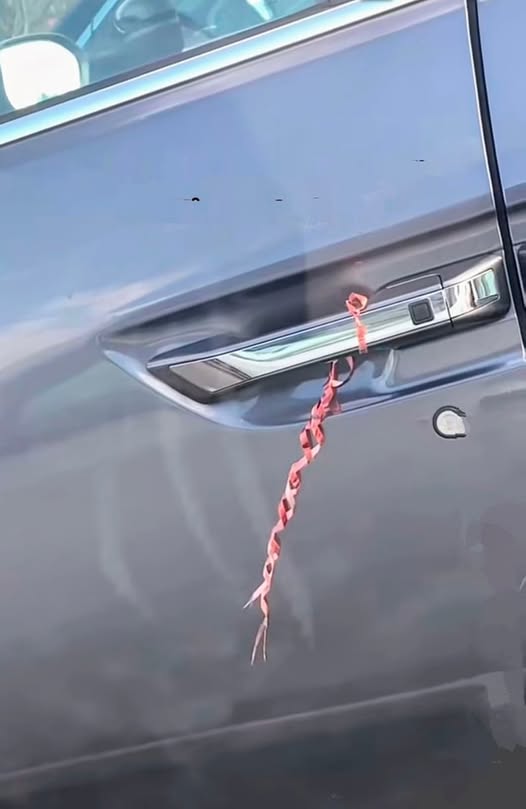Have you ever noticed a piece of string or wire tied to your car door handle? If so, you’re not alone. This peculiar sight has caught the attention of many, leaving people both puzzled and concerned about what it might signify. While it might appear harmless, the underlying implications could potentially point to something far more sinister.

The story gained traction after a TikToker named Shannon shared her unusual experience. Shannon was running errands and shopping at a nearby store when she stumbled upon something that stopped her in her tracks. As she walked back to her car in the parking lot, she spotted a string tied around the driver’s side door handle of another vehicle. But this wasn’t your typical piece of string—it looked more like the ribbon you’d find on a gift. Stranger still, she encountered similar strings on multiple car doors during her short trip.
Naturally, this discovery left Shannon feeling uneasy. Why were these strings there? Were they part of an innocent prank, or did they have a more malicious purpose? Shannon decided to share her experience on TikTok, and her video quickly went viral. Viewers from all over chimed in with their thoughts, speculating on the meaning behind this strange phenomenon.
As the comments poured in, theories ranged from innocent to alarming. Some immediately assumed the worst, suggesting the strings might be a tool used by criminals in attempted kidnappings. The idea was that the string could serve as a distraction, giving perpetrators extra time to act. On the other hand, some people dismissed it as a mere coincidence, perhaps a leftover from a practical joke or an unrelated event. Regardless of the interpretation, one thing was clear: this peculiar situation had sparked widespread concern about personal safety.
The story took another turn when a fellow TikToker named Reese stepped forward with what he believed to be a plausible explanation. According to Reese, criminals might tie string or wire to a car door handle as a tactic to delay a potential victim. Unlike ordinary string, wire is more durable and challenging to remove, even with the help of wire cutters. This additional effort to untie or cut the wire could give an assailant the extra time they need to strike.
Reese’s explanation resonated with many viewers, as it provided a potential motive for such a strange act. However, it’s important to note that this theory, like others, remains speculative. While the idea of criminals using such methods to distract their victims is unsettling, there hasn’t been concrete evidence to confirm that this practice is widespread or consistently linked to criminal activity.
Despite the lack of definitive proof, stories like Shannon’s have sparked an important conversation about awareness and safety. They serve as a reminder to always be vigilant and cautious, especially in unfamiliar or isolated areas. If you ever encounter something unusual, such as a string or wire tied to your car, it’s better to err on the side of caution. Take a moment to assess your surroundings, and if anything feels off, don’t hesitate to seek help or alert local authorities.
Instances like this highlight the power of social media to bring attention to unusual occurrences and encourage public discussions about safety. While some may argue that these viral stories can fuel unnecessary paranoia, they also help raise awareness about potential risks and preventive measures. Whether the string-on-car-door phenomenon is a real danger or simply a coincidence, it has certainly prompted people to think twice about their safety.
In conclusion, while the meaning behind a string tied to a car door handle may vary, the most important takeaway is to stay alert and cautious. Whether it’s an innocent prank or a calculated distraction, being aware of your surroundings and taking steps to ensure your safety is always a good idea. If you notice something unusual, don’t hesitate to share your experience, just as Shannon did, and encourage others to remain vigilant. After all, a little awareness can go a long way in preventing potential harm.





